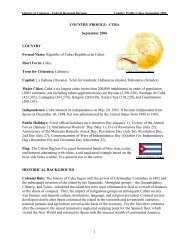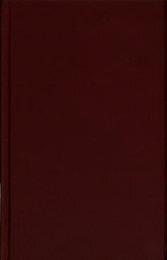Anton Webern's Six Pieces for Ocrhestra, op. 6, Arrangement for ...
Anton Webern's Six Pieces for Ocrhestra, op. 6, Arrangement for ...
Anton Webern's Six Pieces for Ocrhestra, op. 6, Arrangement for ...
You also want an ePaper? Increase the reach of your titles
YUMPU automatically turns print PDFs into web optimized ePapers that Google loves.
the per<strong>for</strong>mance of a new work! How intensely I have worked with singers, down to<br />
the last last [sic] detail. The enormous amount I have learned in doing this! 4<br />
Working as a Wortragsmeister did not, however, earn Webern the recognition <strong>for</strong><br />
which he had h<strong>op</strong>ed. Though he was gratified to see that he had succeeded in<br />
conveying his musical intention by purely verbal direction ("without the direct<br />
physical expression on which a conductor can rely"), Webern was dissatisfied with<br />
acting almost exclusively "behind the scenes," and he there<strong>for</strong>e came to the<br />
conclusion: "To continue working <strong>for</strong> the rest of my life in such a limited<br />
environment --limited with regard to our programs (piano, chamber music, songs)-is<br />
a prospect which I do not find attractive enough....<br />
The rehearsing is wonderful, but ultimately the pe<strong>op</strong>le per<strong>for</strong>m on their own (a<br />
serious problem.)" 5<br />
When the Verein was able to include per<strong>for</strong>mances by larger instrumental<br />
ensembles and chamber orchestra, it looked <strong>for</strong> some time as if this "problem" was<br />
going to be solved <strong>for</strong> Webern. (The Verein's expansion, envisioned right from the<br />
beginning, was to lead eventually to large orchestral concerts, but it did not reach<br />
that point.) He was finally given a chance to conduct two of his own works, namely<br />
the Orchestral <strong>Pieces</strong>, <strong>op</strong>. 10 (then still numbered <strong>op</strong>. 7, No. 4) and <strong>op</strong>. 6, which he<br />
presented in versions <strong>for</strong> chamber ensemble in 1920 and 1921, respectively. Once<br />
again, however, this was not nearly as much as he had expected (and desperately<br />
needed <strong>for</strong> a reliable income), and thus he was obliged to look elsewhere <strong>for</strong> work<br />
as a conductor. His ef<strong>for</strong>ts were successful, though short-lived, when he obtained<br />
his third engagement at the German Opera in Prague (from late August to early<br />
October 1920). 6<br />
<strong>Webern's</strong> third duty in the Verein (besides working as Vortragsmeister and<br />
conductor) resulted from the above-mentioned attempt to present works <strong>for</strong> larger<br />
ensembles: he arranged orchestral works, reducing the original scores to whatever<br />
smaller instrumental ensembles were available. Originally, orchestral works had<br />
been presented in piano reductions only: it was this practice that had led Webern to<br />
write a six-hand piano transcription of his Passacaglia, <strong>op</strong>. 1, which, apart from a<br />
few fragments, has not survived. 7 After February 1920, however, pieces <strong>for</strong><br />
orchestra were per<strong>for</strong>med more and more in versions specially arranged <strong>for</strong><br />
chamber ensembles by members of the Verein. Webern undertook at least five such<br />
chamber arrangements, two of them of works by himself, the other three of works<br />
by Arnold Schoenberg and Johann Strauss. 8



![Albert Einstein Papers [finding aid]. Library of Congress. [PDF ...](https://img.yumpu.com/21604228/1/190x245/albert-einstein-papers-finding-aid-library-of-congress-pdf-.jpg?quality=85)





![American Colony in Jerusalem Collection [finding aid]. Library of ...](https://img.yumpu.com/17941275/1/190x245/american-colony-in-jerusalem-collection-finding-aid-library-of-.jpg?quality=85)



![Piccard Family Papers [finding aid]. - American Memory - Library of ...](https://img.yumpu.com/17941234/1/190x245/piccard-family-papers-finding-aid-american-memory-library-of-.jpg?quality=85)


